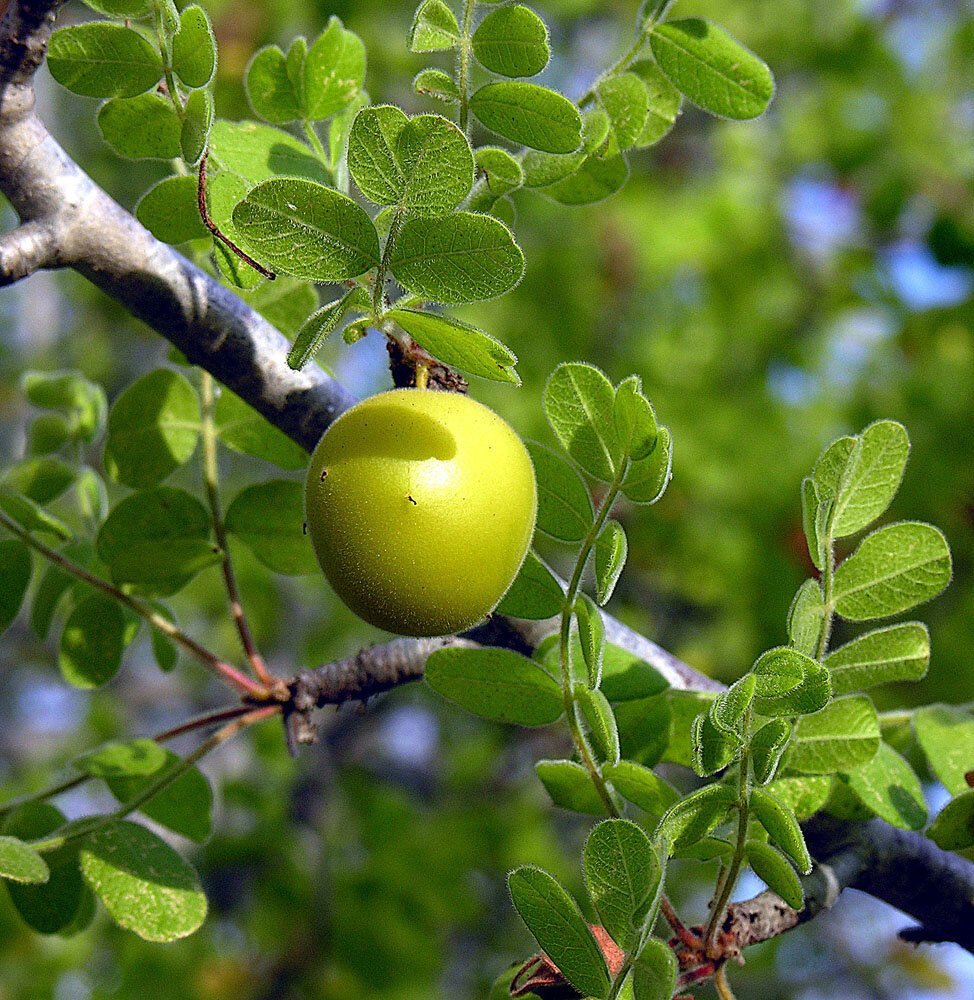Ciruelo Cimarrón
Cyrtocarpa edulis
OTHER NAMES
desert plum, Cimarrón plum
CHARACTERISTICS
Large, tropical, sarcocaulescent (literally translates to “fleshy stemmed” or succulent-like) shrub or small tree reaching to almost 20’ if not frozen, but most often grown in containers in our region. Winter deciduous. Plants form a caudex much like a Bursera. Plants are dioecious, separate males and females on each plant which are green and white and somewhat inconspicuous. Flowers are followed by round fruits that ripen from green to yellow.
LANDSCAPE USE
Specimen plant.
Photo of Cyrtocarpa edulis by diego_vera on iNaturalist
GROWING CONDITIONS
AN EXPLANAITION OF TERMS USED
SUN full to part sun
WATER moderate to low water
SOIL well-drained
BASIN top
CONTAINER does very well in containers
HARDINESS frost tender, protect from temperatures below 30°F
FEEDING moderate to low
MAINTENANCE low, protect from frost
ECOLOGY
Fruits for birds.
ETHNOBOTANY
Fruits are edible and taste like buttered popcorn! This plant contains antioxidant compounds, which have been studied to determine if they can be used to improve germination and growth of other cultivated crop species such as tomatoes and peppers.
NATURAL DISTRIBUTION
This species most commonly occurs in the Cape Region of Baja California Sur, but may be found in the mountain ranges from the southern Sierra de la Giganta to Los Cabos. It also occurs on the adjacent islands of San Jose, Espiritu Santo, and Cerralvo in the southern Gulf of California. This plant is commonly found on sandy plains and slopes, and often in arid, tropical forests or in areas of deep soil in the mountains. It is intolerant of shade in the foothills, and is sensitive to low winter temperature in the highlands.
TAXONOMY AND NAME
This species is in the Anachardiaceae, the cashew family. There are 12 species of Cyrtocarpa.
Cyrtocarpa translates to round-fruited, referring to the shape of the fruit, while edulis means edible.

